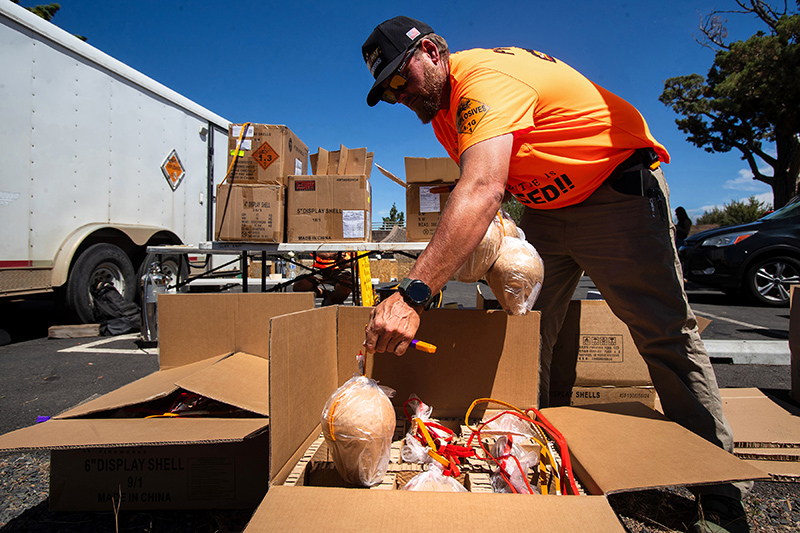Making the cut with squash
Published 5:00 am Tuesday, October 9, 2012

- Round and ridged, acorn squash can be tricky to cut — but its sweet, nutty flavor is well worth the effort.
Q: Is there a trick to cutting an acorn squash in half?
A: Because of its many ridges, an acorn squash can be difficult to balance on a cutting board.
To achieve some stability, turn the squash onto its flat end (stem side down). Using a long chef’s knife, start cutting from the top.
It’s likely that your knife will cut only halfway through, at which point you can rock the squash back and forth, using your free hand to put a little pressure along the spine of the knife toward the tip.
If gently rocking the squash on your cutting board doesn’t work and your knife is still completely wedged inside it, simply lift the whole thing up — the knife with the squash attached — and firmly and quickly (and carefully) bring the squash back down to the cutting board. Gravity will usually help you get the job done.
Making over a backyard
Q: I want to transform my new backyard by next summer, but it’s full of weeds and I have no idea where to start. Any advice?
A: The first thing you should do is get a handle on the weeds in your lawn. You can find tips for preventing future weeds and caring for your grass at safelawns.org.
For perennial beds, the best way to prevent weeds is to mulch; just be sure to start before the first frost. Mulch keeps weeds at bay, locks in moisture, prevents erosion and improves the quality of the soil without the use of harsh chemicals.
And you most likely already have a key ingredient for the mulching process: newspaper. Be sure to use newsprint with only black ink, especially if you’re preparing a vegetable garden, and don’t use glossy magazine pages; color dyes may harm the soil.
Lay five or six layers of newspaper over the soil, and wet the paper thoroughly using a hose with a spray nozzle. Cover the newspaper with 3 inches of quality shredded-bark mulch (no, you don’t even need to weed first). Then you can relax as the “critters” in the ground do your dirty work.
Microbes and bugs will break down the paper, the mulch and the weeds. The castings they leave behind contain nutrients that will fertilize the soil. By spring, your garden will be ready for planting, and you’ll already have a protective layer of mulch.
Hand-washing delicate clothes
Q: Is it OK to use regular laundry detergent to hand-wash clothes? I have heard that it’s bad for your hands.
A: Hand-washing clothes with laundry detergent meant for machine washing can definitely lead to dry, irritated skin. Conventional laundry detergents often contain artificial dyes and fragrances that can dry out your hands.
Even detergents labeled “dye-free” or “fragrance-free” can be made with some abrasive chemicals because they are designed for much larger loads and a washing machine with plenty of friction and a rinse cycle.
For a gentle experience for your hands, as well as your hand-washables, use a formula specifically designed for hand-laundering or even a very mild dishwashing liquid.
To hand-wash clothes properly, start by adding a few drops of detergent to a basin of tepid water. Next, swirl clothes around in the soapy water, and then gently squeeze the fabric. After letting the garment soak for a few minutes, rinse it in warm water until it is free of soap bubbles.
Gently compress and squeeze each garment over the basin to remove excess water. While the clothing is still wet, lay it flat on a clean towel and roll it up, pressing as you roll. Remove it from the towel, and let the clothing air-dry on a hanger, a rack or a clothesline located in a breezy place.
Knits and sweaters should be dried flat.








